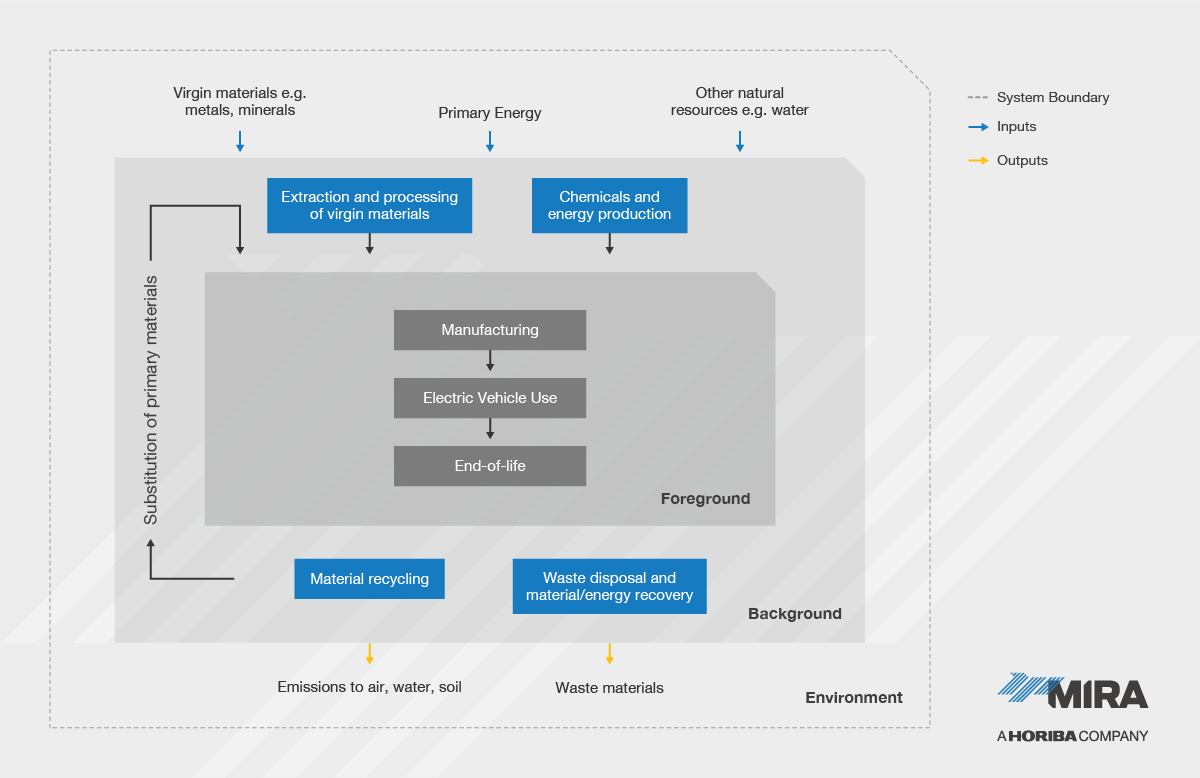If FCEVs and BEVs are to replace ICE vehicles (ICEVs), then it is important to establish that they are truly beneficial overall and reduce negative impacts in a broad range of contexts from ecosystems to human health to demand on natural resources.
To best understand the overall impact of both classes of vehicle, life cycle analysis (LCA) is applied. This is a complex process of quantifying a product’s impact from the extraction and refinement of raw materials to the manufacture of components, the assembly process, the production and consumption of energy throughout the operational phase, and finally, the end-of-life phase, varying from disposal to reuse or recycling.
Guest Blog: using ultrasound to address thermal runaway
There are several drivers supporting the use of LCA. The European Commission has released a new ‘Circular Economy Action Plan’ that connects product design to end-of-life to promote a circular economy. For instance, it promotes a framework for battery manufacturing that demands sustainability and transparency requirements to span the carbon footprint of manufacturing, the ethical sourcing of raw materials and the reuse, repurposing and recycling of used batteries.
During the manufacturing stage FCEVs and BEVs produce up to two times the amount of greenhouse gases compared to ICEVs
LCA is a topic of great interest to HORIBA MIRA in order to provide guidance on the development of appropriate standards and to support the industry in designing vehicles that reduce negative environmental impacts and adhere to any new regulations.
HORIBA MIRA recently conducted a review of life cycle analyses utilising a wide variety of data, models, and databases to assess the impact of FCEVs and BEVs. The high level impact areas of interest were climate change, human health, ecosystems, and natural resources, which are quantified using metrics including greenhouse gas emissions (kg CO2 eq), human toxicity potential (kg dichlorobenzenes eq), acidification (kg SO2 eq), abiotic depletion (MJ), etc. Careful attention was also paid to the system boundary definitions and life cycle inventories, both of which have substantial impacts on the results.
LCA identified that during the manufacturing stage FCEVs and BEVs produce up to two times the amount of greenhouse gases compared to ICEVs. In FCEVs, this is predominantly caused by the platinum extraction and processing for the fuel cell stack, as well as the energy consumed in carbon fibre production in components such as hydrogen storage tanks. In BEVs, the battery cell manufacture has the most significant impact. The LCA also demonstrated that for both human health and resource depletion concerns, FCEVs and BEVs also perform worse than ICEVs. For EVs, if the manufacturing and assembly process uses low-carbon energy, the impact significantly decreases.
Crucially, the operational phase, which includes the distribution and consumption of fuel, is where FCEVs and BEVs have the greatest potential advantage over ICEVs. The lack of local exhaust emissions and significantly higher efficiencies compared to ICEVs are paramount to this. However, this advantage can only be achieved using low-carbon and/or renewable energy. The length of vehicle life is also crucial, as sufficient time is required to overcome the higher manufacturing impacts of electric vehicles.
In terms of climate consideration, FCEVs can deliver reductions up to 85% in greenhouse gases, while BEVs can achieve reductions up to 95% over comparable ICEVs. The main factors impacting these benefits are the hydrogen production method – where compression is favoured over liquefaction – and the use of low-carbon and/or renewable electricity e.g. nuclear, wind or hydro generation. One study suggests that if coal was substituted for clean electricity generation for BEVs, their total impact would be approximately four times worse than the equivalent ICEVs.
End-of-life for FCEVs and BEVs provides an opportunity for abatement of impacts through the reuse of materials, where the use of renewable and low carbon energy to manage these processes is key. FCEVs have good recyclability potential (around 90%), while figures vary – between 50-90% – for BEVs, with current technology at the lower end.

From HORBA MIRA’s analysis of available data, the answer to this important question of whether EVs are actually beneficial to the environment throughout their life cycle is ‘yes, providing certain conditions are met’.
These conditions include a sufficient proportion of renewable or low-carbon energy used throughout the entirety of the life cycle; for FCEVs, hydrogen should be compressed, as liquefaction is too inefficient; the vehicle lifetime needs to be sufficiently long to overcome the significant impact of the manufacturing process, which outweighs today’s ICE vehicles.
With the expectation that legislation will move towards a circular economy and a more holistic view of product life, and discussion still open about what those standards could be, HORIBA MIRA is in a position to guide and support the development of these standards, as well as provide consultancy to businesses creating products and services in line with LCA requirements. This could be for the entirety of a vehicle, or focused on specific components that have a particularly negative impact.
Adam Zucconi is an Advanced Energy Research Scientist at automotive engineering and development consultancy HORIBA MIRA
Index image: stock.adobe.com





Nanogenerator consumes CO2 to generate electricity
Whoopee, they've solved how to keep a light on but not a lot else.